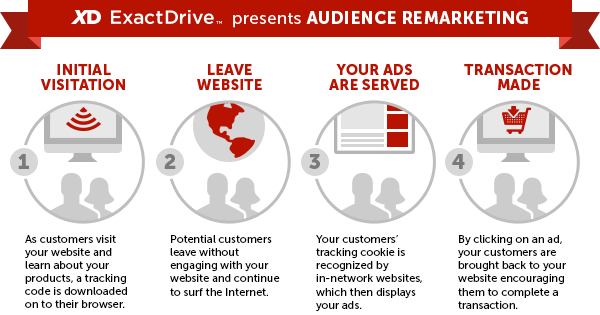 Retargeting is a highly effective online advertising technique that directs your ads to people who have previously expressed an interest in your product or service by visiting your website. It allows you to remind them how great your product or service is, and why they should choose your brand.
Retargeting is a highly effective online advertising technique that directs your ads to people who have previously expressed an interest in your product or service by visiting your website. It allows you to remind them how great your product or service is, and why they should choose your brand.
Despite the fact that retargeting has become an integral digital advertising tool, many misconceptions still exist about it.
Here are 4 common retargeting myths, and why you can ignore them:
Myth #1: Retargeting is only for Retail
There is a common misconception that retargeting is exclusively for retail businesses. While it’s true that e-commerce businesses make the most use of retargeting, it can provide significant benefits to businesses in all sectors.
If you are directing traffic to a lead capture form or landing page, retargeting can help keep your brand at the front of users’ minds while they are in the evaluation process. This is especially helpful in a B2B context because the sales cycles tend to be longer than in B2C transactions. Serving retargeted ads, such as static banner ads or dynamic display ads, will keep your company ahead of the competition, and nurture leads through the funnel.
Myth #2: Retargeting is only for large businesses
Another misconception is that retargeting is an elite practice, reserved for big businesses with unlimited digital online budgets. However, retargeting is a powerful tool that can deliver a high ROI regardless of the size of your business. Even if you start off small, you can increase the budget over time as your revenue and profits increase. You can serve ads all over the web to people interested in your business without having to buy expensive ad space.
Myth #3: Retargeting Only Accesses Remnant Inventory
Another common myth about retargeting is that only low-quality inventory is available for it, but this has been rendered irrelevant with the advent of real-time bidding (RTB). RTB allows online advertisers to place bids on ad space that comes up for auction within seconds. Some of these ad spaces are on the main page. Your ads can appear in the ‘prime’ spaces – meaning that it is possible to access high-quality inventory for retargeting, through RTB.
Myth #4: Retargeting Compromises User Privacy
There is a misconception that retargeting abuses users’ privacy. However, retargeting pixels do not collect any personally identifiable information, such as names, addresses, or IP addresses, and all targeting is done anonymously. Retargeting uses cookies to store anonymous data about whether or not a user has visited a certain site, which allows advertisers to focus their ads only on people who have been to their site before.
How Does Retargeting Work?



.png?t=1424814964945)
